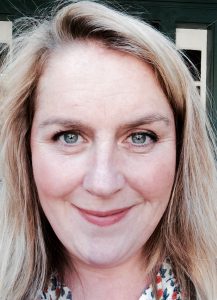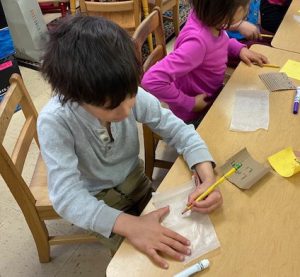Science Super Star: Nancy Steimle
We spotlight Nancy Steimle, CRS Science Super Star honoree, who teaches at Thornhill Elementary in Oakland. Nancy encouraged her students to look at ordinary objects in a new light, and discover how their uses can be changed for different goals.
April 3, 2020
We are honored to announce Nancy Steimle, a Kindergarten Teacher at Thornhill Elementary in Oakland, as a 2020 Science Super Star!
 Nancy encouraged her students to look at materials in a way that expanded beyond their everyday lives. While her students were experts at using paper for writing and art projects, none could think of applications for paper otherwise. When she asked her classroom about other types of paper, they initially could only name different colors of paper, rather than types.
Nancy encouraged her students to look at materials in a way that expanded beyond their everyday lives. While her students were experts at using paper for writing and art projects, none could think of applications for paper otherwise. When she asked her classroom about other types of paper, they initially could only name different colors of paper, rather than types.
To debunk the misconception that all paper is exclusively for writing, Nancy posed a question to her young class: “Are all types of paper good for writing on?”
After introducing various paper types to her students, such as wax paper and corrugated cardboard, she had them observe each type closely. They felt, waved, and flopped the assorted papers to determine the characteristics and predicted which would be the best for writing.

Once the experiment started, Nancy was surrounded by exclaims from her students, “Ack! This is too bumpy! My name looks like a bunch of lines!” “The wax paper is repelling my marker!” and “The paper tears when I write on it!” Her students’ tests led to them confirming or adjusting their initial predictions. They concluded the experiment with a reflection page, noting the Best and Worst papers to write on, and why.
Nancy encouraged her students to look at ordinary objects in a new light, and discover how they can be changed for different objectives. She even connected the experiment to the students’ lives by discussing the best paper for making Valentines and paper airplanes (right after the children learned about Besse Coleman!). It also coincided perfectly with a trash assembly where her class learned about composts, landfills, and recycling. Leaning about how one object can have so many differing uses was the perfect experiment for her students who are super excited to save the planet!
Nancy’s advice for other teachers is “Reach out to colleagues. Look on Pinterest! Lots of great ideas for inquiry and STEM!”
